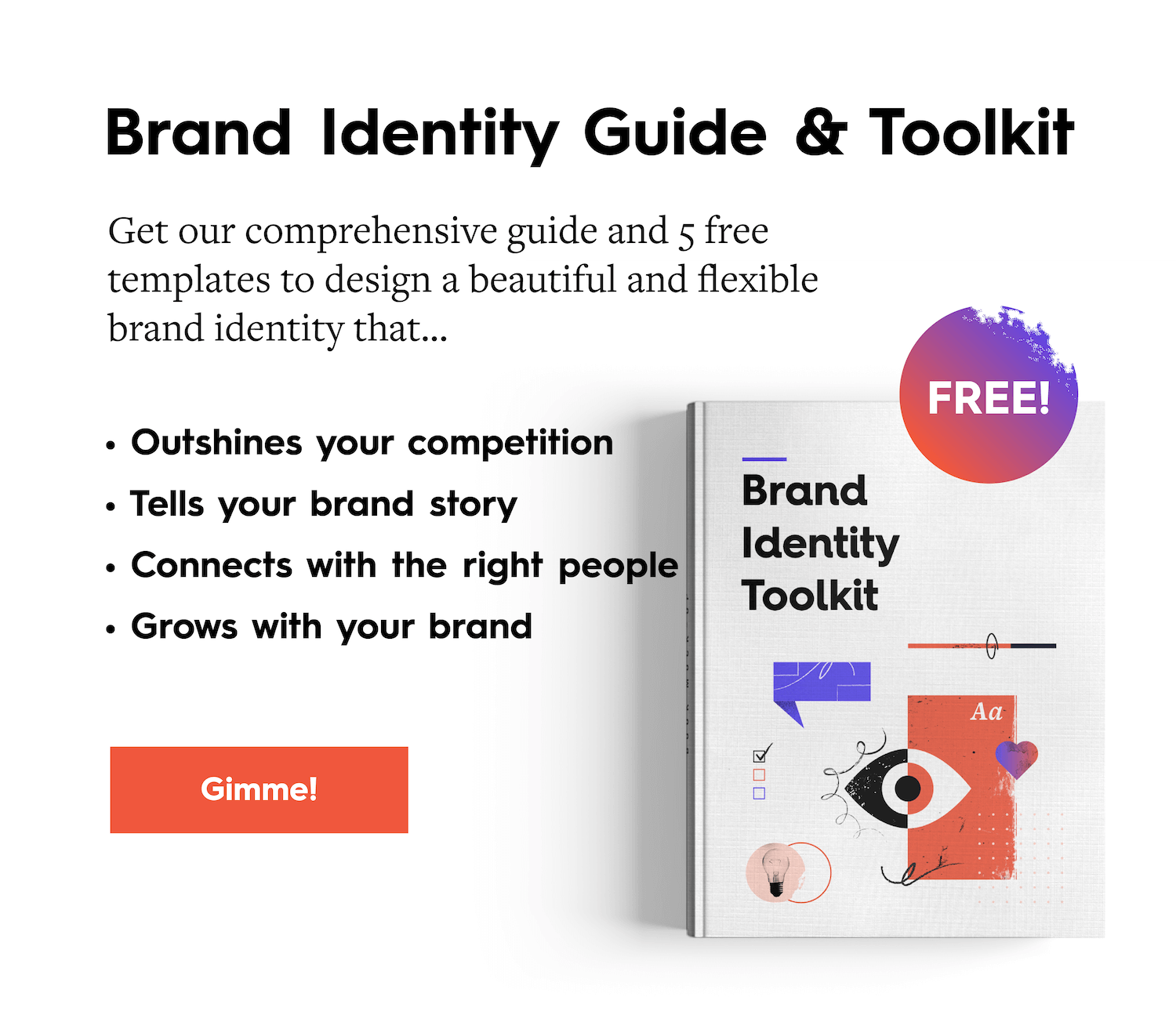So you think you’re ready to pull the trigger on a rebrand, and you’ve done the necessary homework.
- You have a good reason to do it. (If you’re not sure, here are 7 reasons to consider one.)
- Your leadership has approved it.
- You have a brand team who can help you do it.
And now you’re ready to hit the ground running.
You may be eager to dive into logo prototypes or tagline brainstorming, but a good rebrand requires more than that. It’s an intentional and meticulous process that involves high-level thinking and deep reflection about every aspect of your brand: who you are, what you do, why you exist, and more.
Hence, a rebrand can take a lot of time—sometimes years. For a huge global company, it can require millions of dollars and an enormous team of interdisciplinary creative professionals (at least that’s what it took for Pepsi’s rebrand). And while it can be less complex and costly for a mid-size company or startup, it’s still a detailed process. You can’t just give a designer carte blanche or tell an agency you want something “young and fresh,” then expect the right idea to roll in. You need to take a strategic approach.
Thus, one of the most crucial first steps in a rebrand is a comprehensive brand audit. This single exercise will generate the insights you need to conduct a rebrand the right way.

What Is a Brand Audit?
A brand audit is an exercise to help you understand your brand as it is now. Before you look to your bright and shiny future, you need to understand what’s working, what’s not, what can be improved, what needs to evolve, and so forth. This shines a light on your strengths, weaknesses, blind spots, opportunities, etc. It’s only once you have that big-picture view of your brand that you can identify the directions you need to move in.
(This clarity is especially important if you’re working with an outside agency. It’s smart to do a brand audit before you reach out to a branding agency, as they will need to know this info anyhow.)
There are two key parts of a brand audit exercise:
- Auditing your own brand.
- Auditing your competitors’ brands.
This full exercise helps you analyze your own brand objectively—and spot opportunities to differentiate by analyzing your competitors’ brands as well.
How to Conduct a Brand Audit
Here, we’ll walk you through the steps to complete a brand audit, pulled from the framework we use ourselves.
Step 1: Download our Brand Audit Template.
Use our free Brand Audit Template, which includes templates to audit both your brand and your competitors.

These templates include all of the questions we’ll cover here, conveniently presented in an editable PDF you can distribute to the team you will be surveying for this brand audit. (In addition to your core brand team, you should open it up to anyone who might have valuable insights about your brand.)
Note: We’ve encountered many of the roadblocks or hiccups that can happen during a rebrand, and we find it’s often due to a communication issue. To make sure your brand audit is as effective as possible, make sure you…
- Answer all questions as thoroughly and honestly as you can.
- Gather insights and feedback from individuals at all levels of your organization, not just the higher-ups.
- Come to a consensus about the main takeaways/things you want to carry into your new identity.
This way everyone can rest easy knowing that the information you’re working with is current and accurate. So, onto the exercise.
Step 2: Audit your own brand.
Answer the questions outlined in the template. These questions cover three specific areas of your brand:
- Current Core Identity: The foundational elements of your brand (including your business, values, competition, audience, etc.).
- Current Verbal Identity: The way you speak about your brand (including tagline, value prop, messaging pillars, voice).
- Current Visual Identity: The way you look (including logo, color, typography, etc.)
On the surface, it might seem like a simple survey. However, for brands that don’t have a well-articulated brand strategy, these seemingly simple questions can actually be difficult to answer, which is why it’s important to come to a final consensus after questionnaires are distributed. (Trust us; differing opinions and vague responses can cause havoc down the road.)
Distribute these questionnaires and have your team answer these questions individually (and honestly!). Your goal is to get a sense of how your brand is currently performing.
CORE IDENTITY
This details the foundational elements of your brand.
- Business name
- What you do: Briefly describe your business.
- Brand Heart: Outline your purpose, vision, mission, and values.
- Audience: Who are your target personas?
- Competition: Who are your top 3-5 competitors?
- Key differentiators: What makes you different/better than your competition?
- Brand personality: How do you describe your brand?
If you need to articulate/build any of these items from scratch, see our guides to conduct a competitive analysis and identify your Brand Heart, personas, and brand personality.
VERBAL IDENTITY
This is how you speak about your brand.
- Tagline: How do you sum up what you do in a single sentence?
- Value prop: What unique value do customers get from purchasing your product/service?
- Key messaging: What are your main selling points or messaging pillars?
- Voice: How do you speak in your content?
If you need to articulate/build any of these items from scratch, see our guides to find your tagline, value prop, messaging, and voice.
VISUAL IDENTITY
Audit your existing identity and document what does or doesn’t work about your…
- Logo
- Color palette
- Typography
- Visual elements (Photography, illustration, etc.)
Does your current identity…
- Reflect your personality?
- Align with/communicate your values?
- Differentiate your brand?
Document your key takeaways.
- What are your biggest opportunities to improve?
- Identify the things you would like your new visual identity to communicate.
Step 3: Audit 3-5 competitor brands.
For the purposes of this audit, we’re looking specifically at competitors’ visual brands. To complete this exercise, review one competitor at a time and document your findings as you go. To get a sense of how each brand presents its identity, take a look at their website (especially their homepage), social media profiles, and any other relevant content.
COMPETITOR AUDIT
- Logo: What shapes/imagery do they use? Do they use a wordmark, logo mark, or both?
- Typography: What dominant typefaces do they use (serif vs. sans serif)? What weights do they use (light, regular, bold)?
- Color palette: What dominant colors do they use? Are they similar to other competitors?
- Photography: Are they using stock photography or custom photography?
- Illustration: What style do they use? Are humans depicted in their illustration style?
- Brand story: Do you “get” their personality, positioning, etc. through their visual presentation?
- Copy: What’s the tone (humorous, witty, serious, lighthearted)?
Based on your audit, document the insights that will help you design a strong and unique identity to compete.
- What common visual themes did you observe?
- What are your biggest opportunities to differentiate?
Step 4: Collate your audit answers.
Your job is not to gather surveys, then dump the pile on your poor design team or branding agency and let them figure it out.
Instead, once you have your surveys completed, review them to look for similarities and discrepancies (particularly in the internal audit). While the responses may differ wildly, they also provide incredibly valuable insight into how your current brand is succeeding or failing at communicating your identity. (Large discrepancies are also a symptom of why a cohesive rebrand is so necessary.)
Step 5: Gather your team to come to a consensus.
The goal of a brand audit is to come to a consensus about the direction of your rebrand, and use that information as the foundation of your creative exploration. So, gather your core brand team, present the insights you’ve learned, and have a discussion about what works, what doesn’t, what you can improve upon, etc. For example, you might find that your Brand Heart is accurate, but your tagline is off. Or you may find that your logo is good, but your voice and tone don’t gel.
Step 6: Document your findings.
After you’ve talked it out, you should be able to fill out your creative brief to guide your visual identity rebrand. You can then share it with whoever is helping with your rebrand. This document will help make your rebrand stronger and more successful from the get-go.
Step 7: Proceed with your rebrand.
Having successfully completed your brand audit, you should now understand what you’re trying to solve through your rebrand—and thus you can proceed with the process.
For step-by-step guidance on how to complete a rebrand from start to finish, see our ultimate guide to complete a rebrand. And as you continue down the path, remember that patience and clarity are the keys to a successful rebrand. The better you communicate, the better the experience will be for everyone.
That said, sometimes brands with the best intentions still get stuck during the process. If that happens, consider bringing in an agency that can help you through the dark. Find out what it’s like to work with us on a brand identity engagement or holler at us. We’d love to help you tell your brand story as effectively as possible.





Would like learn and know more about branding and re-branding.